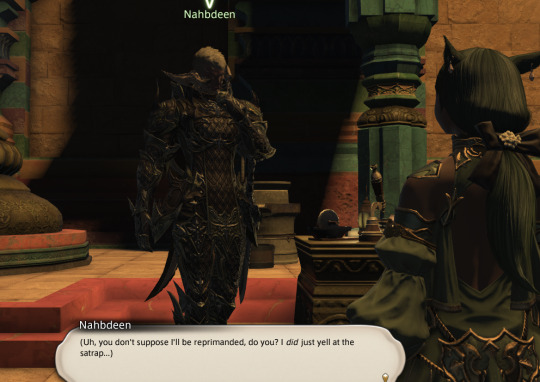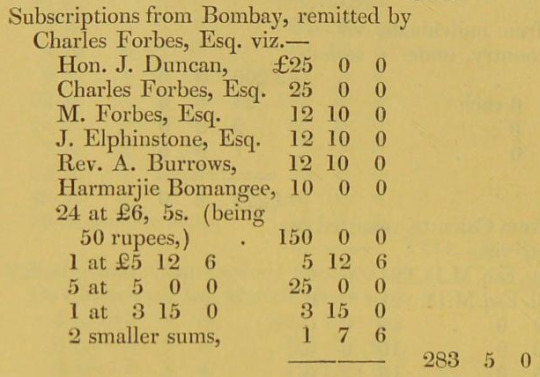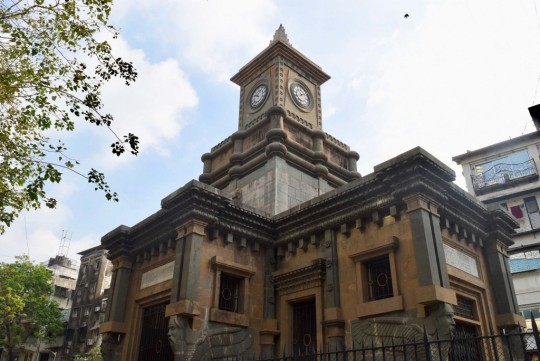#HES' SUCH A GOOD GUY...... CALLING THE SATRAP HIS LITTLE BROTHER
Text

Hi why is Nahbedeen the best
#HES' SUCH A GOOD GUY...... CALLING THE SATRAP HIS LITTLE BROTHER#HE'S JUST A LITTLE GUY!!!#screenshot#screenshots#ffxiv
25 notes
·
View notes
Text
“Harmarjie Bomangee” and the Royal Edinburgh Asylum
The last post was on donations from India to the REA. In the list of named donors covering the years to 1836 there is only one non-British name, “Harmarjie Bomangee” in the donations for 1812:

So who was he, and why was he donating money to the REA?
First: I know pretty much nothing about the history of Mumbai, so there may be mistakes in this - I’m very happy to be corrected! Second, there are a lot of vagaries with transliteration so “Harmarjie“ is likely to be the same name as Homarjee, Hamarji and so on.
In Mumbai there is the Bomanjee Hormarjee Wadia Clock Tower:

(Photo from this blog post which has great photos of loads of Mumbai architecture)
Eagle-eyed nerds/co-religionists will have noticed the lammasus at the entrances and gone “Aha! A member of the Parsi community!” and they would be right. Bomanjee Hormarjee was a noted philanthropist, especially to educational causes. However, in 1812 he was four, so not likely to be our man.
How about his dad then? Hormasji Bomanji Wadia (1766–1826) is the right age for some philanthropic giving, and in Mumbai. Most of the information after this comes from the book Between Boston and Bombay: Cultural and Commercial Encounters of Yankees and Parsis, 1771–1865 by Jenny Rose, 2019, and I wish to apologise to the author for skipping through her book with ctrl+F to just read the bits about our man. She helpfully gives the information that he was “also known as “Hormarji,” and “Hormusji”” - so I’m fairly certain he’s our “Harmarjie Bomangee”.
Hormasji was part of the Wadia family, notable for shipbuilding, trading and philanthropy; he was a grandson of Lowji Nusserwanj Wadia who had founded the shipbuilding firm in 1736. Hormasji first acted as a broker for Charles Forbes (the guy who remitted the donation to REA), then became a partner in the firm (Forbes & Co) in 1794 - as well as having his own successful brokerage firm. The home he built was called Lowji Castle, and an American visitor in 1818 said he was “as rich and haughty as a Persian satrap”. Hormasji and the rest of his family were prominent in matters of religion in the Parsi community, and in philanthropic and charitable concerns in Mumbai in general.

(The Forbes & Co offices in 1810, via the British Library, because I can’t find a picture of Lowji Castle)
This doesn’t explain a donation to the REA though. If he had an interest in European “lunatic” institutions, there was one already on his doorstep that he could donate to, at Colaba (I have read multiple different statements about when it was founded, but there is a firm reference in the 15th March 1800 Bombay Courier that an Assistant Surgeon Baird will “take charge of the Lunatic Hospital at Colabah”, implying that it was reasonably well established by then). It was a hospital for Europeans, and may have served mainly as a temporary staging post for shipping people back to Europe; but nonetheless, it was a darn sight more immediate than Edinburgh.
I haven’t managed to find anything which would point to a definitive reason for the donation; there is more literature in English on the Wadia family at this time which may give the answer, but it’s not available online.
In the absence of a definitive answer, have some possibilities:
- There was a need for Hormasji to very specifically nail his colours to the mast regarding Forbes & Co and the governor; the money being raised for REA seems to have been a niche concern of real interest only to Scots, so his contribution could have been a public marker of a very specific allyship in the commercial and political landscape.
- It was something of an f- you. A ship built for the British in 1800 by Jamsetji Bomanji (I think Hormasji’s brother) had carved on its keelson “This ship was built by a damned black fellow, A.D. 1800″, so f- yous were definitely going around. Perhaps the donation was in the spirit of “oh dear, the capital of Scotland doesn’t even have a lunatic asylum when little old Bombay does? I shall deign to donate to the cause.”
- Rose’s book says “The festivities at the Wadia-owned Lowji Castle were legendary throughout the early nineteenth century”, and Forbes was a regular guest. The donation could under the category of “things that seemed a good idea at 3am and you now can’t back out of”
As an aside, three big organisations in this story, the Wadia Group, Forbes, and the Royal Edinburgh are all still in existence, not something you can often say when you’re talking about things that happened in 1811.
0 notes